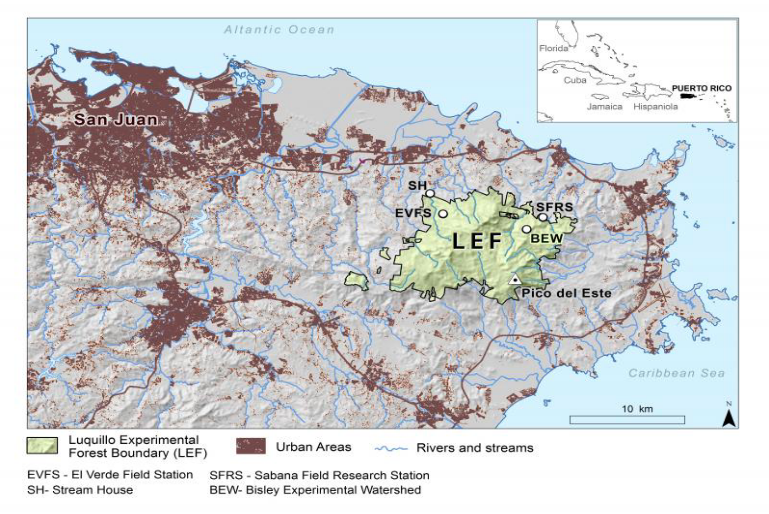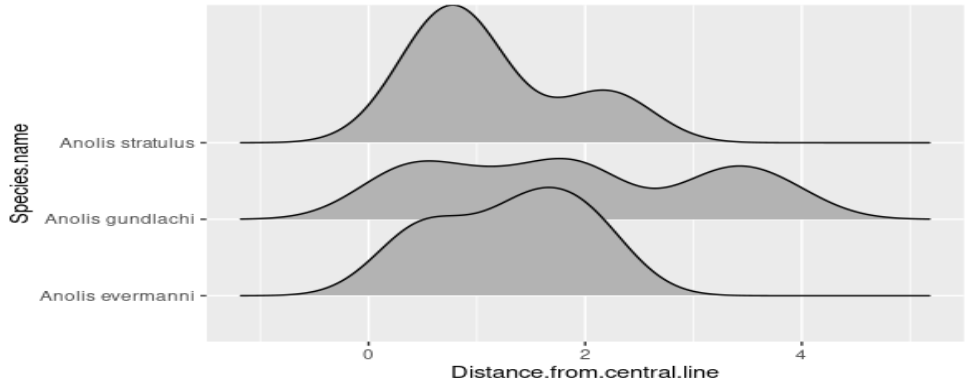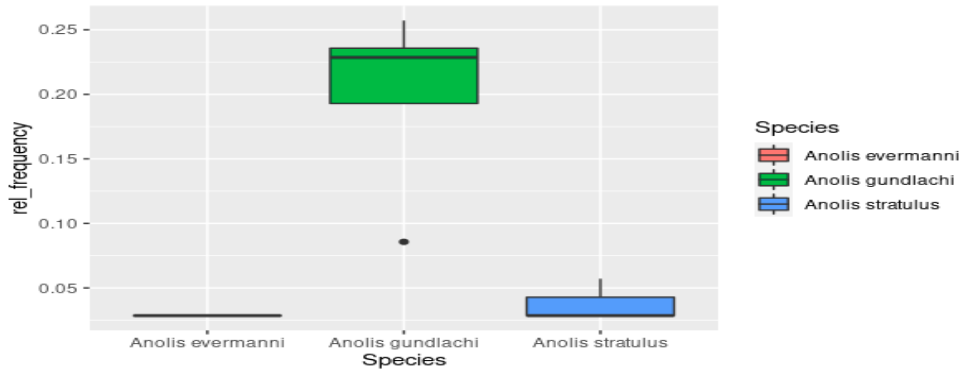Anole Distribution Throughout Tree Gap Transects in Costa Rican Rainforest
Introduction
- With an increase in warming temperatures more hurricanes are occurring each year.
- Tropical rainforests are one of the terrestrial ecosystems that are impacted by hurricanes. The increase in high wind energy causes structural damage to the mature canopy.
- Anoles are found throughout the canopy structure in rainforest and feed on a diverse number of pests.
- Three species of anoles we looked at:
- A.evermanni- found up to 6 ft into the canopy
- A.gundlachi- found on rocks and the forest floor.
- A. stratulus- found at the very top of the canopy to 6 ft down the top of the canopy.
We will be looking at how anole density and species change identity as distance is gained from tree gaps caused by hurricanes in the Puerto Rican rainforest. I hypothesize that the loss of the canopy cover will cause more anoles to move away from the tree gap to find higher perches in the canopy, therefore, I predict there will be more anoles in the areas away from the canopy than in the tree gaps.
Methods
Data for this project was previously collected from two tree gap transects (Bisley and El Verde) at the Luquillo Long Term Ecological Research Site in Puerto Rico. Transects were established by large treefall due to hurricanes. Data was collected on location, time and date of the anole sighting, transect, season (dry or wet), anole species, sex, age, and height, and area of perch.
Of the data collected we analyzed distance from the tree gap and correlating population density of the different anole species using a two-way variance (ANOVA) test. We tested relative frequency as our response variable in response to distance from gap and species identity. Expected results upon completion of this analysis is an increase in anole population density as distance is gained from the tree gaps.

Results
- We found that Anole species abundance varied significantly ( F=15.67, p=0.0128)
- A. gundlachi was the most abundant.
- Abundance did not change with distance from the gap (F=15.67, p=0.0128)
- No significant interaction between species identity and distance.
- Our hypothesis is null.


Conclusions
- It is possible that there are more A.gundlachi due to a bottleneck effect caused by canopy destruction.
- A.gundlachi being a ground anole survives while A.evermanni and A. stratulus being canopy dwellers, were wiped out from the loss of canopy.
- Our graph looks to have a significant interaction between species identity and distance
- The ANOVA test clarifies that this is not true.
- We found that there was not a significant difference between species identity and distance from the tree gap.
- This could be due to pre-existing small population or because the species were all affected the same.
Acknowledgements
- The Luquillo Long Term Ecological Research Site in Puerto Rico
- All those who participated in the collection of the data.
- Regan Douglas and Jessica Murray for their help with coding and statistical analysis.
- R Studio Cloud for reading and performing our statistical analysis

